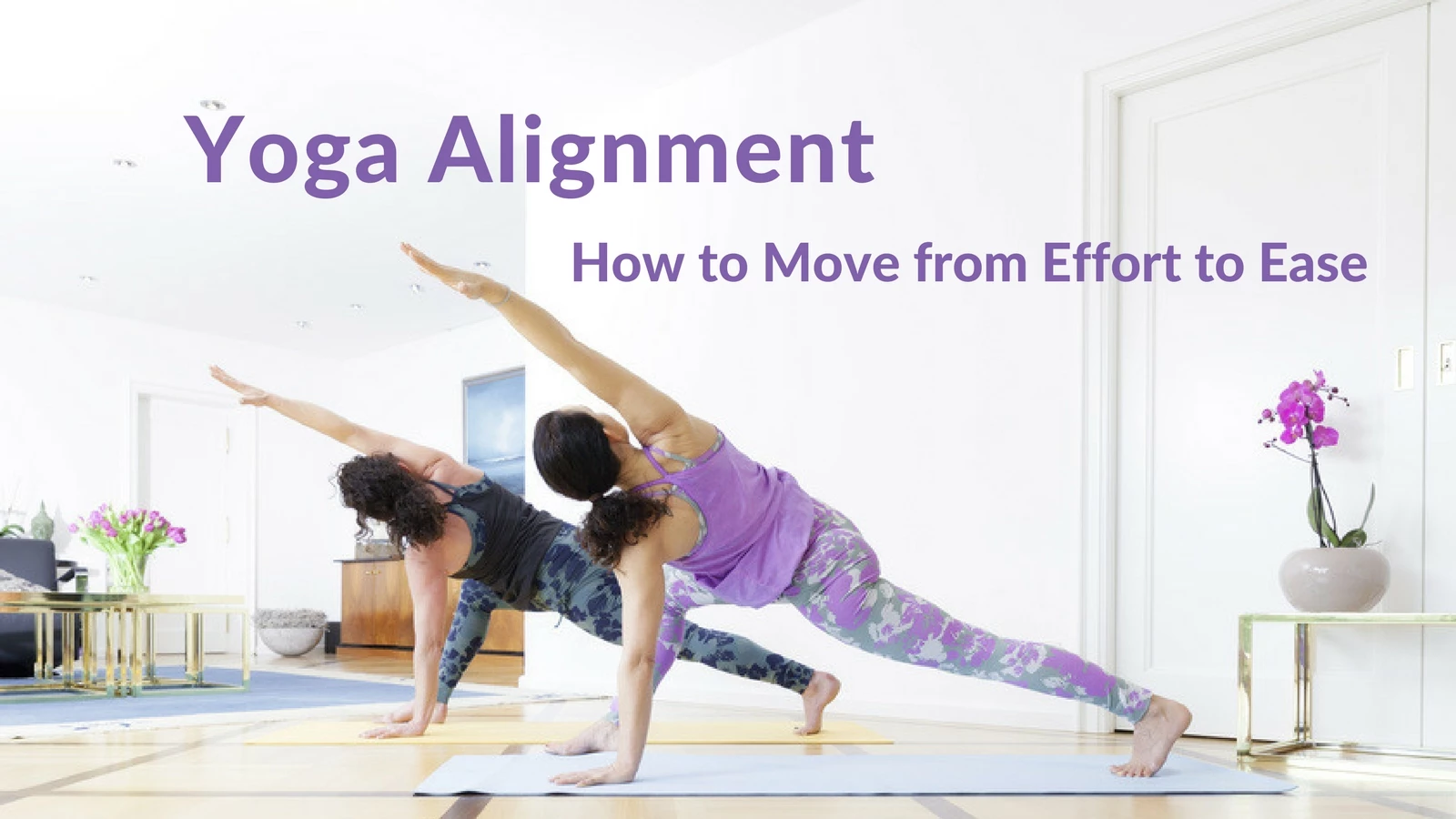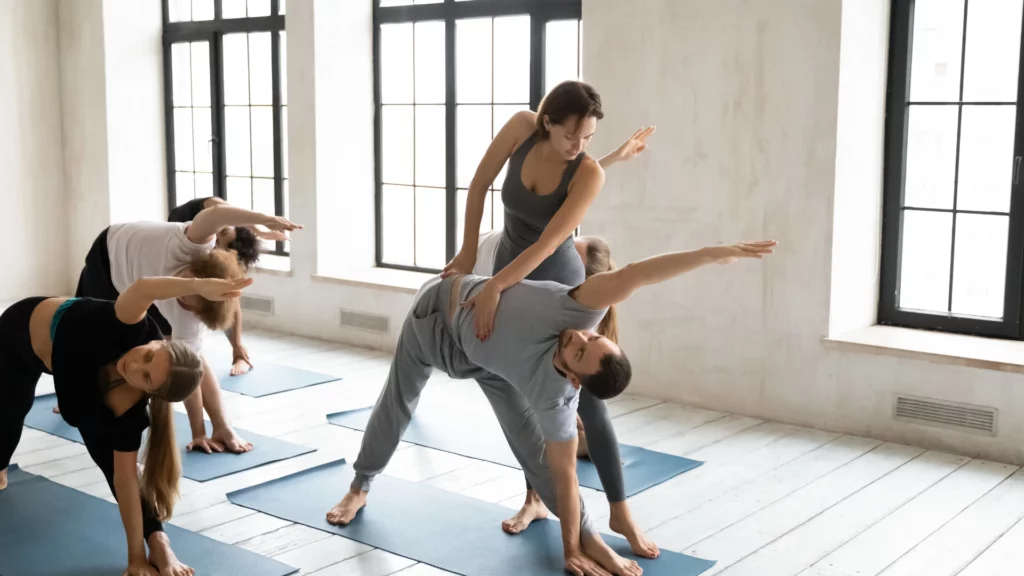A New Look at Alignment in Yoga: Finding Continuity to Balance Effort & Ease

World-renowned yoga teacher, B.K.S. Iyengar, who is often credited for this work bringing yoga to the West is particularly well known in the yoga world for his emphasis on alignment. The purpose of asana practice, he noted, is to create an energized and peaceful environment in the body to enable the mind to be both alert and calm. A body that is undisciplined and misaligned is less likely to rest in a state of equilibrium.
A Different Way of Looking at Yoga Alignment
While I agree completely with this, in theory, and through decades of my own practice, I’ve begun to move away from using the word “alignment” in favor of the concept of “continuity.” All too often, “alignment” can imply that there’s one way to arrange one’s body in a pose and that it is universal. I know that many teachers understand that alignment is not a one-size-fits-all proposition, but for me, the word itself implies this.
Continuity, on the other hand, suggests a more internal experience. Continuity in yoga refers to a state of harmonious agreement throughout the moveable parts of the body. In other words, when we focus on continuity, we tune into the relationships between bones at each joint, between the inner movement intentions (the breath) and the outer manifestation of an asana, and between the internal and external structures of our bodies. In this post, I’d like to focus on continuity through the joints.
Continuity Through the Joints

If you spend much time looking at yoga photography, you may get the idea that achieving Cirque du Soleil-like poses is indicative of “good” practice. People practicing yoga poses that are structurally unattainable for most practitioners may or may not be “advanced” yogis. I know I’ve said this in a thousand different ways, but yoga is not about performing fancy poses. It just isn’t.
Asana practice is about harmonizing our bodies and minds. And creating continuity through our joints is one very concrete and attainable way of moving into a state of ease and harmony.
Continuity through our joints means that rather than focusing on pushing to the end range of our joints in order to achieve the “full expression” of a yoga pose, we instead create smooth transitions through our joints. Pushing joints to their end ranges can often create micro-tears and impingements in the joint capsules. Constantly overstretching ligaments—the collagenous tissue that connects bones to other bones—create unstable joints.
Ligaments are designed to limit the movement of our joints. When our ligaments become overstretched from continually pushing our joints into their end ranges, our muscles must become tighter in order to do the work of the ligaments. While we may not feel these injuries in the moment of pushing into our joints, habitually doing this will wear down soft tissue over time, leading to joint problems down the road.
Pushing joints to their end ranges increases stress in our nervous systems as our bodies’ natural protective mechanisms kick in to keep our joints from moving too far. If Asana’s purpose is to create a peaceful environment in the body, pushing for maximum sensation is not the way to do it. Joint continuity may require you to move to your end range and then back off a bit. When I do this, my poses feel much more stable and grounded, and my mind feels immediately at ease.
How to Create Continuity in Your Yoga Practice

Creating continuity is a tricky proposition. It’s tricky because there’s no strong sensation that accompanies continuity. When we push into our joints to the point of sensation—comfortable or uncomfortable—we know who and where we are. When we back off a bit in the service of continuity, there’s not a whole lot of obvious sensation.
So, I arrange my body in such a way as to feel little to no sensation at my joint sites—feet, ankles, knees, hips, sacroiliac joint, vertebral joints, shoulders, elbows, wrists, and hands. I create my yoga pose from the ground up, checking in with each joint as I soften into the asana.
Practicing with the intention of creating continuity is also tricky because it’s likely to be variable from day to day. That’s where mindfulness is so valuable. When we learn what continuity feels like, we can adjust our asanas from the inside.
Sometimes, it is helpful to move slowly and consciously toward your end range. When you reach your end range, back off a bit until you feel a sense of ease in all planes around your joint. There should be no sense of impingement or restriction of the flow of energy between the bones at each joint.
Mindfulness of the disposition of your brain can help you determine if your asana is in harmony with itself. Does your brain feel tight, hard, strained, or contracted? If so, relax your brain if possible, then look around the body and note where else you might be straining.
All these cues are subtle. They require that we look more deeply than we may be used to. An overstretched or impinged joint will speak right up—its feedback is right on the surface. Reciting alignment rules in our heads as we practice squelches deeper exploration. Looking deeper is the essence of yoga practice. Practicing for continuity brings ease to the journey of deep looking.
Also, read...
In Celebration of Gray-Haired Yoga – Busting the Myth of the Yoga Body
Stand Firm: 6 Easy Balancing Moves for Your Daily Yoga Routine
Related courses

Charlotte Bell began practicing yoga in 1982 and began teaching in 1986. She was certified by B.K.S. Iyengar in 1989 following a trip to Pune. In 1986, she began practicing Insight Meditation with her mentors Pujari and Abhilasha Keays. Her asana classes blend mindfulness with physical movement. Charlotte writes a column for Catalyst Magazine and serves as editor for Yoga U Online. She is the author of two books: Mindful Yoga, Mindful Life, and Yoga for Meditators, both published by Rodmell Press. She also edits Hugger Mugger Yoga Products’ blog and is a founding board member for GreenTREE Yoga, a non-profit that brings yoga to underserved populations. A lifelong musician, she plays oboe and English horn in the Salt Lake Symphony and the folk sextet Red Rock Rondo whose 2010 PBS music special won two Emmys.



